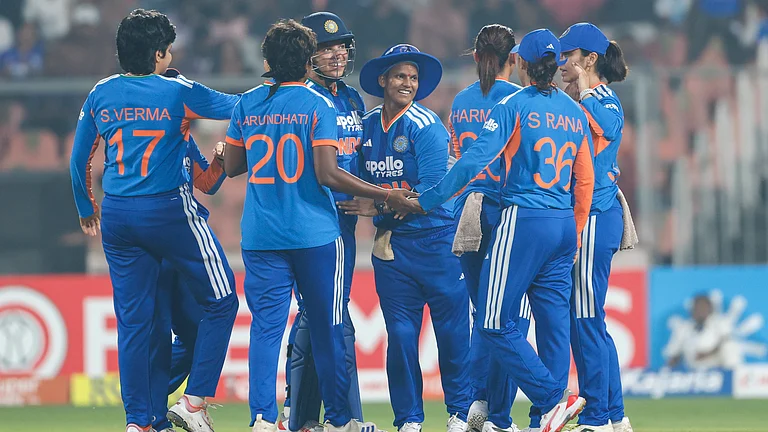Ravichandran Ashwin is probably the finest student of contemporary cricket. He is a self-confessed "cricket badger". Even when he's not playing, the ace spinner is busy refining his craft and working overtime to make sure the game becomes a level playing field for bowlers and batters. It's no surprise that he has come up with another suggestion, this time asking for a radical rule change on how batters are adjudged Leg Before Wicket (LBW). (More Cricket News)
Ashwin, who has 442 Test wickets, said that the batters should be given LBW out even if the ball is pitched outside leg stump, if they miss out on an attempted switch/reverse hit. As per rules, a batter can't be ruled leg before even if the ball goes onto hit the stumps after pitching outside leg-stump.
But the 35-year-old, demanding the change in the rule, said: "My question is not whether he can play reverse sweep or not, whether it's negative bowling strategy or not (bowling outside leg stump), my point is about LBW. It's unfair that it's not ruled LBW.
"Let batters play the switch hit, but give us LBW when they miss. How can you say it is not LBW when the batter turns? If they start giving that out in all formats of the game, some parity could be retained between bowling and batting."
And he has got enough examples to justify the call. Citing incidents from the rescheduled fifth Test between England and India, the ace spinner said "it was about the approach that Joe Root and (Jonny) Bairstow took. Root played about 10 shots, where he turned around completely and attempted the reverse sweep. He played that 10 times but didn't connect on 9 of them. On the 10th time, it got the under-edge and rolled away. Bairstow, meanwhile, kept padding the balls away."
The contentious issue here is the so-called 'blind spot'.
"This is where I have a small difference of opinion. As a bowler, I am informing you that I am bowling left-arm spin from over the stumps and I have this (leg side) field. You front up to that as a right-hander, but you play that reverse sweep and hit like a left-hander," Ashwin said while speaking on a podcast.
"But when Root does that, he won't be out LBW because of the blind spot. It's only a blind spot when you are at your normal stance. Once you play the reverse sweep and have a left-handed stance, it's no longer a blind spot. It's front on," he added.
During his podcast, the offspinner also called for a return to one ball per innings in the ODIs.
"I'm an absolute cricket badger, a nut, and I switch off the telly after a point of time, watching the one-day game," Ashwin said. "That's frankly very scary for that format of the game, I think. Those ebbs and flows, when they go missing, it's not cricket anymore, it's just an extended format of T20.
"I think one ball is something that would work and even the spinners would come into play. You'd have a lot more spinners bowling at the back half of the game. They are bowling right now but you might see a little more slowing of the pitch or whatever it is, and the reverse-swing might come back into play which I think is very crucial for the game."
For the uninitiated, since 2011, two new balls have been used per innings in ODI, thus giving an advantage to batters.
And he might end up convincing the Marylebone Cricket Club (MCC), the guardian of the laws of the game, to change the rules, just like in the case of 'Mankading'.
Vindicating his advocacy, the MCC earlier this year stated that 'Mankading' will now be a run-out only, and it will no longer be considered 'against the spirit of the game'.
Then, reacting to the rule change, Ashwin said that “They mentioned the run-out at the non-striker's end tried by the bowler under the 'unfair play' category. Non-striker leaving the crease early is the actual unfair play in this whole scenario, not the bowler running them out”.
Last year, Ashwin also suggested that "a free ball for the bowlers every time a batter leaves the non-striker's end early, a wicket of that ball will reduce 10 runs off the bowler's analysis and total."
Ravichandran Ashwin has played 86 Tests, 113 ODIs and 51 T20Is, picking 442, 151 and 61 wickets respectively.


























